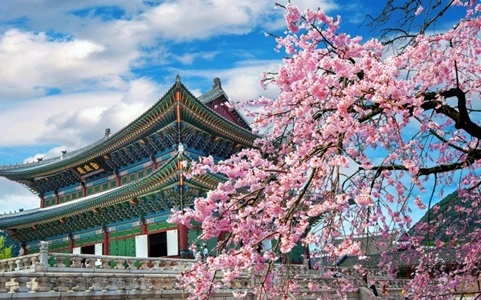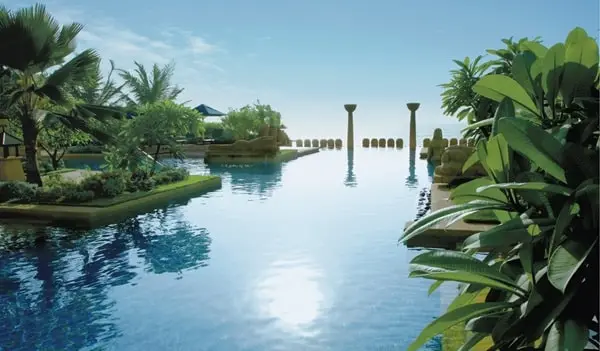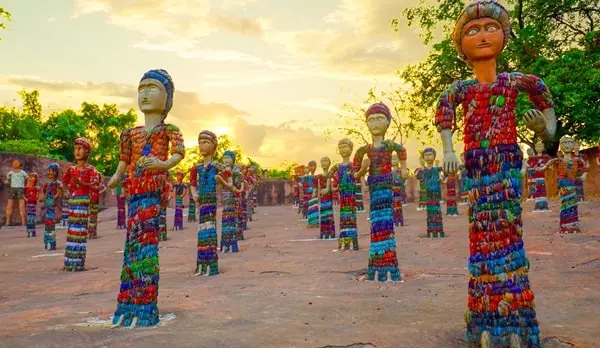India has diverse climatic zones and is known for extreme temperature variations. Whether it is the hot desert plains of Rajasthan and the sweltering coastal regions or the cold heights of Ladakh and North East, the country has different regions experience varying climates. India is mainly known for its hottest cities due to the tropical climate of the country. However, there are many places in the country where the mercury dips even below the freezing point. Such locations remain cold even during the summer season. This is the reason why they are favourite summer tourist spots for people wanting to escape the extreme heat of the plains. Let’s have a look at top 10 coldest cities in India for the year 2025.
1 Leh

Leh is the major city of the Union Territory of Ladakh, located in the northernmost part of India in close proximity to the Karakoram Range right at the border with China. Winter temperatures drop to -30 degrees Celsius and below, while the maximum temperatures during summer do not cross 20 degrees Celsius. Winter season in Leh lasts from November to March with temperatures below freezing point for most of the season, and characterised by heavy snowfall which block the access roads.
Leh sits at an elevation of 3500m and is dominated by tall mountain peaks. The climate of this region is classified as cold desert.
2. Spiti
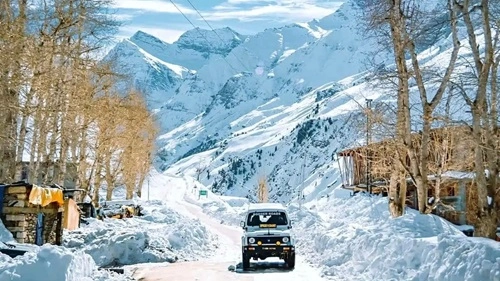
Spiti, located in the state of Himachal Pradesh, is known for its rugged terrain and stunningly picturesque landscapes. Winter temperatures drop to -20 degrees Celsius and below, while the maximum temperatures during summer remain around 15 degrees Celsius. Winter season commences in the month of November and continues till March with temperatures dropping below freezing point for most of the season.
Spiti is located at an altitude of 4270 metres and is a cold desert due to its position in the rain shadow region of Himalayas. High altitude villages and monasteries are numerous in this region.
3. Tawang
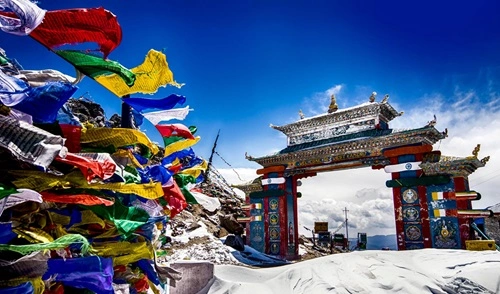
Tawang is situated in the North Eastern state of Arunachal Pradesh near the border with Tibet. Winter temperatures drop to -15 degrees Celsius, while the summer temperatures range between 5-15 degrees Celsius. Winter season lasts from November to April and is characterised by heavy snowfall.
Tawang receives more rainfall during summer than winter. It is a popular tourist destination for both tourists and spiritual seekers, owing to the presence of numerous Buddhist monasteries and picturesque landscapes. The famous Sela Pass is located in the Tawang district.
4. Gangtok
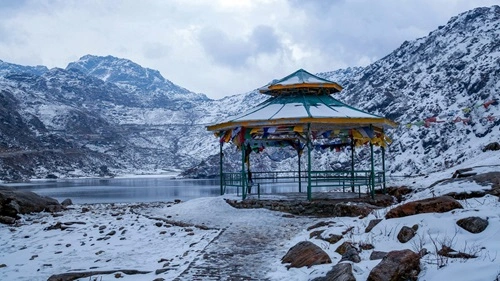
Gangtok, the capital city of the Himalayan state of Sikkim, is located in the Eastern part of the state. Winter temperatures range between 0 degrees Celsius to -15 degrees Celsius with extreme cold during the month of December. Summer temperatures range between 5 degrees Celsius to 15 degrees Celsius.
Gangtok experiences winter season from October to February with heavy snowfall blanketing the region from December to February. The city offers panoramic views of the Himalayas and is widely known for its monasteries and local markets.
5. Munsiyari
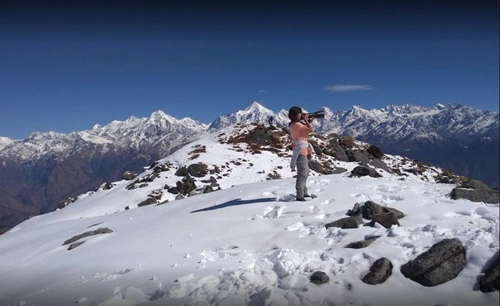
Munsiyari is a popular tourist destination located in the Pithoragarh district of Uttarakhand, near the border with Nepal. Winter temperatures drop below freezing point and reach as low as -10 degrees Celsius, while the summer temperatures range between 15-25 degrees Celsius. Winter season lasts from late November to early March with coldest months being December and January.
Munsiyari is located at an altitude of 2500 metres above sea level and remains cold and dry throughout the year. Due to the presence of icy lakes and snow-covered mountains, Munsiyari is called Little Kashmir.
6. Sonmarg
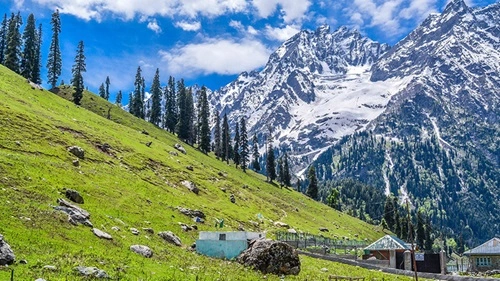
Sonmarg is a popular hill station located at the base of Zoji La Pass in the Ganderbal district of Jammu and Kashmir. During the winter season, the temperatures drop to even -8 degrees Celsius while the summer temperatures remain in the range of 15-25 degrees Celsius. Winter season starts in October and continues till February.
Sonmarg is famous for its tranquil lakes and picturesque landscapes. It is also a popular destination for winter sports like skiing, snowboarding and snow trekking.
7. Pahalgam
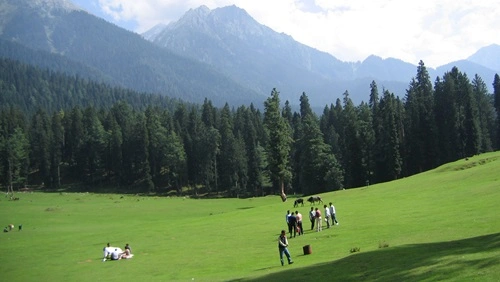
Pahalgam is a famous hill station located on the banks of the Lidder River at an altitude of 2200m in the state of Jammu and Kashmir. The city experiences extremely cold winters with temperatures dropping to -8 degrees while the maximum summer temperature is around 25 degrees. Winter season lasts from October to May with January being the coldest month.
Pahalgam is famous for its crystal clear Lidder River, pine forests, scenic meadows and mountains, and the ancient Martand Sun Temple.
8. Manali
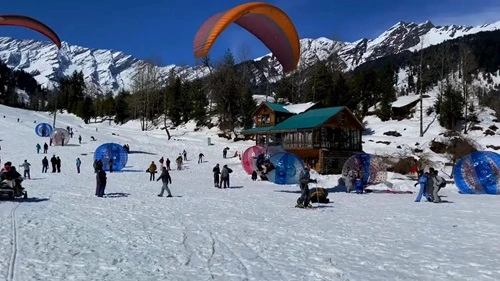
Manali is a small resort city located at the northern end of the Kullu Valley in the Himalayan state of Himachal Pradesh. Winter temperatures in this city drop below freezing point and reach as low as -7 degrees Celsius while the summer temperatures range between 10-30 degrees Celsius. Winter season lasts from October to February with temperatures falling to sub-zero levels in December and January.
Manali is the gateway to Rohtang Pass and other high altitude regions. It is a hub of adventure activities like rafting, paragliding, zorbing and others.
9. Dalhousie
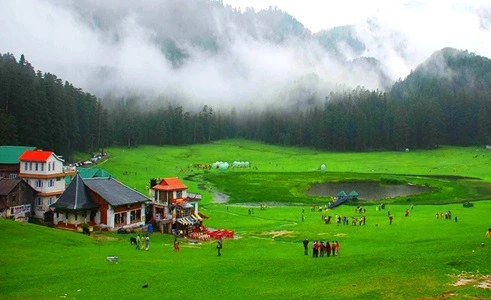
Dalhousie is a high-altitude hill station located in the Chamba district of Himachal Pradesh. Winter temperatures in the city drop to as low as -5 degrees Celsius while the summer temperatures range between 15-27 degrees Celsius. The winter season lasts from October to February.
Dalhousie is famous for its picturesque landscapes, pine-clad valleys and British-era buildings. It is popularly called the Mini Switzerland of India.
10. Nainital
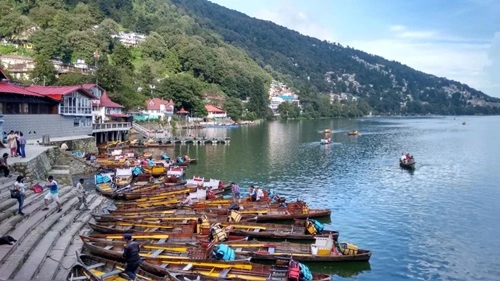
Nainital is a popular hill station located in the Kumaon region of the Himalayan state of Uttarakhand. Winter temperatures in the city drop to the freezing point while the summer temperatures range between 11-28 degrees Celsius. The winter season in Nainital lasts from October to February with January being the coldest month.
Nainital is centred around the picturesque Naini Lake. The city offers various scenic points and is also known for its local markets.
Conclusion
Coldest cities in India are famous destinations for tourists and adventure enthusiasts but extreme cold during the winter season is particularly harsh on the inhabitants of these places. Heavy snowfall in these places frequently cut off the residents from the rest of the country.

